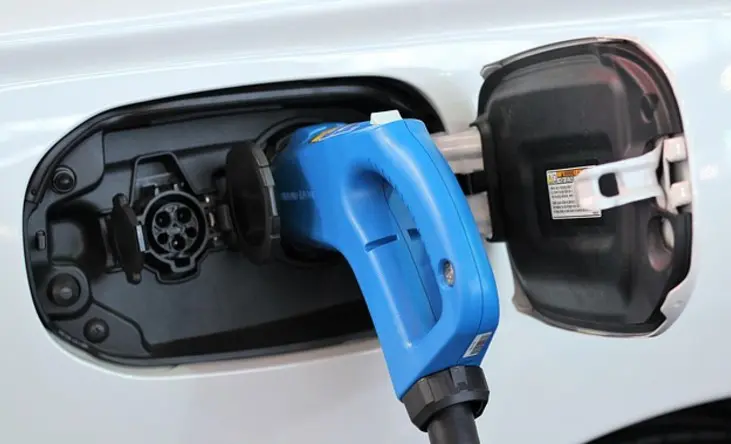SUSTAINABILITY| 08.07.2021
Can we really achieve carbon neutrality?
Climate change is the result of unsustainable amounts of CO2 being emitted into the atmosphere. In May 2019, CO2 levels reached 415 parts per million. There’s a complex methodology behind this calculation, but to put it in perspective: a safe level is considered to be anything less than 350 parts per million. As a result, no one can deny the need to reduce the emission of CO2 into the atmosphere. The debate now focuses on how we’re going to do this, and by how much we should reduce those emissions.
This debate stems in part from the signing of the Paris Agreement in 2015, a legally binding international climate change treaty negotiated by a total of 195 countries during the UN’s 21st Climate Change Conference, and signed by enough of them to ensure its entry into force. In this regard, one of President Biden’s first decisions following his election was to rejoin the agreement that Donald Trump had previously abandoned.
The main objective of the Paris Agreement is to limit global warming by reducing greenhouse gas emissions. In 2020, the participating countries were invited to present their long-term strategies to limit polluting gas emissions. In addition to each state’s individual efforts, the Agreement provides a framework for collaboration that promotes both financial and technical cooperation between countries.
What is carbon zero?
First, we need to clarify that we use lots of terms to refer to the same concept: carbon neutral, carbon zero and net zero, all of which have the same meaning. The United Nations website provides a clear and accurate explanation of this concept: Emissions will continue, but will be balanced by absorbing an equivalent amount from the atmosphere.

It’s worth points out that just because the objectives set are for the long-term, such as by 2050, does not mean to say that immediate action isn’t required now. Claudio Forner, a climate change expert , explains that when it comes to climate action, though it may seem like a long time a 30-year period is actually very fast given that we’re talking about offsetting 100 to 200 years of past human activity.
We therefore have to be clear right now about what we want to do and how we’re going do it. We can’t stop emissions from industry and transportation overnight, but we can start making changes right now to reduce those emissions. Forner also notes that we’re facing a challenge that will involve costs, but also opportunities. For example, the UN claims that more jobs will be created thanks to renewable energy than those lost due to the decline in fossil-fuel use.
Can we reach carbon neutrality?
We’ve established it as an objective, and set the target date. But can it be done? The UN is clear that we already have the technology to achieve net zero.
The main pillars are promoting an economy that runs on clean energy obtained from renewable sources; a complete change in transportation, which must become 100 percent electric; and changes in food, such as reducing meat consumption and consuming more plant-based products.
Of course, striking a balance requires effort on two fronts. All of the above aims to reduce emissions, but we also need to look for ways to remove carbon from the atmosphere — and technology has a key role to play here. On this front, it’s also hugely important to avoid deforestation, an issue already addressed in this space.

The European Parliament’s website states that the EU has collectively agreed to the commitments made in the Paris Agreement. In addition to providing a similar definition of carbon neutrality, it indicates that the main objective is for Europe “to become the first continent that removes as many CO2 emissions as it produces by 2050.” Though the road ahead doesn’t stop there, as it adds: “After 2050, more CO2 should be removed from the atmosphere than is emitted.”
The responsibility of all
Both national and transnational institutions appear to agree that objectives related to decarbonization require immediate action if we want to prevent the continued gradual warming of our planet. But it is essential to extend this conviction, and the actions it entails, to all productive industries and also to our homes and everyday lives.
The Chilean website Plataforma Arquitectura emphasizes the importance of decarbonization in the architecture industry. It proposes 10 strategies to decarbonize the way we design and construct buildings. You can read more about this on their website, but suffice it to say that this highlights the importance of collective efforts to achieve a common objective.

As for individuals and households, given that existing legislation does not apply, it’s a matter of personal responsibility. Tips to reduce our carbon footprint are available from many publication outlets. From changing our eating habits, to using alternative forms of transportation and conscious efforts to avoid wasting water and energy.
Using a carbon footprint calculator can be very instructive both for individuals and for businesses and institutions. The Ministry for the Ecological Transition’s website has tools to measure the impact that organizations, municipalities and even farms have on the environment. For individuals, there are endless online carbon footprint calculators that can assist anyone committed to monitoring whether or not they’re playing their part.
Risks and problems with the concept of carbon zero
Decades have passed without the problem being addressed head-on and without emissions being reduced. Other types of solutions have also been questioned, such as the mass effort to plant trees for bioenergy. The ultimate conclusion is that the only viable solution is to reduce emissions, with a view to ensuring that global warming does not go beyond 1.5 degrees Celsius.
All these considerations are important, but they do not change the most fundamental need: we must urgently pursue carbon neutrality. However, we need effort on two fronts: reducing emissions, and removing carbon dioxide from the atmosphere. In this race for the planet’s survival, technology will be essential, but this will not allow us to shy away from our own personal responsibilities.

